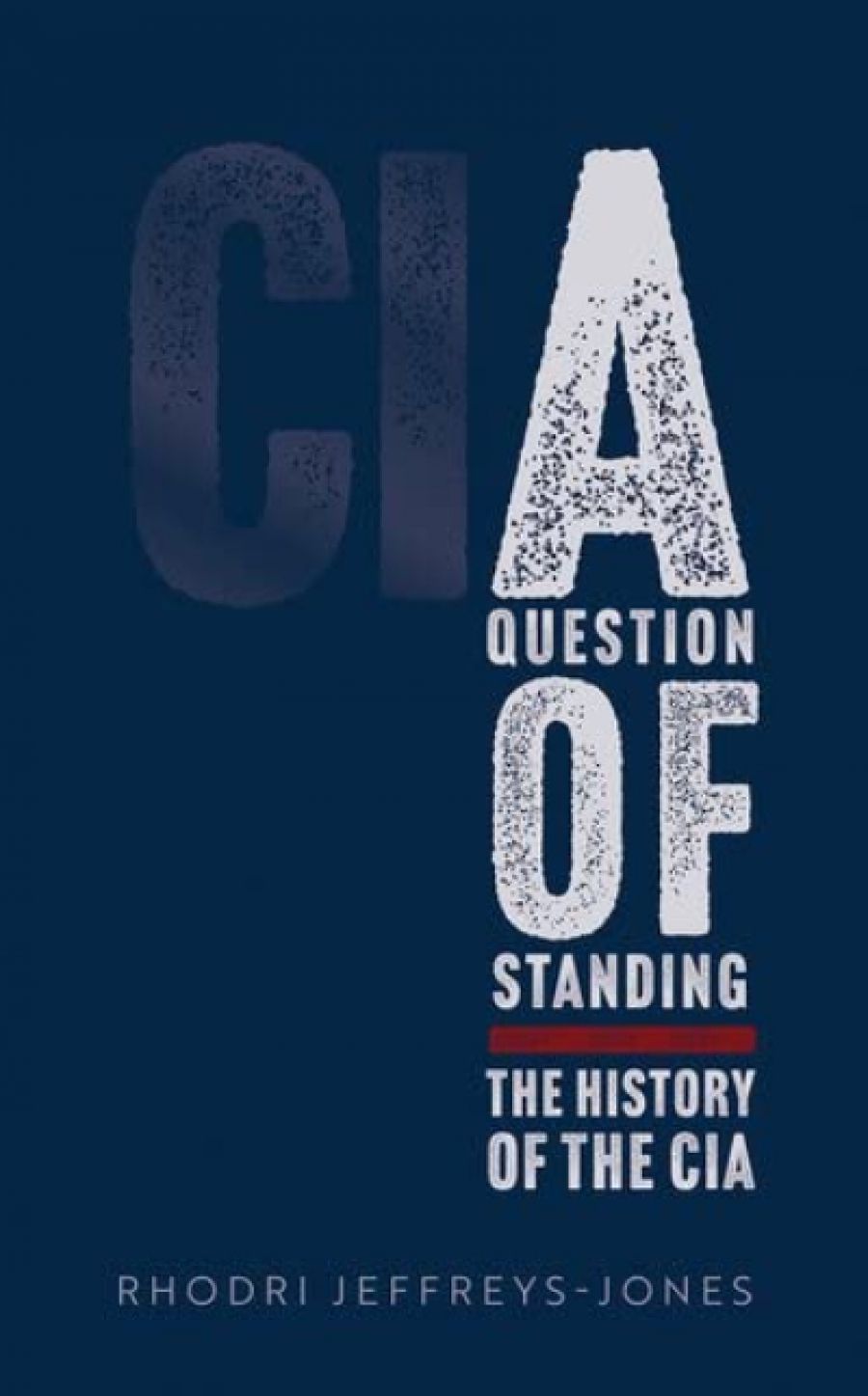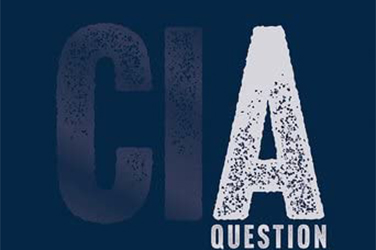
- Free Article: No
- Contents Category: Politics
- Review Article: Yes
- Article Title: American Gestapo?
- Article Subtitle: A new history of the CIA
- Online Only: No
- Custom Highlight Text:
I was once subjected to a lecture by a Dublin taxi driver ‘on the extensive inequities of the Central Intelligence Agency’. Its every atrocity, in Southeast Asia, Latin America, and the Middle East, was relayed to me. It was an object lesson in the popular contempt in which the CIA has been held since its founding in the 1940s.
- Article Hero Image (920px wide):
%20copy.jpg)
- Article Hero Image Caption: Demonstrators wearing Henry Kissinger and pig masks protest against US involvement in Angola in front of the Capitol, 1976 (CSU Archives/Everett Collection Historical/Alamy)
- Alt Tag (Article Hero Image): Demonstrators wearing Henry Kissinger and pig masks protest against US involvement in Angola in front of the Capitol, 1976 (CSU Archives/Everett Collection Historical/Alamy)
- Featured Image (400px * 250px):

- Alt Tag (Featured Image): Timothy J. Lynch reviews 'A Question of Standing: The history of the CIA' by Rhodri Jeffreys-Jones
- Book 1 Title: A Question of Standing
- Book 1 Subtitle: The history of the CIA
- Book 1 Biblio: Oxford University Press, $43.95 hb, 312 pp
- Book 1 Readings Link: booktopia.kh4ffx.net/n1Q7V9
To those sceptical of American power, the acronym ‘CIA’ has the same connotations as ‘KGB’ has for Russophobes. There is something inherently sinister and undemocratic about its agents. Worse, when the Central Intelligence Agency was born after World War II, it was derided by conservatives as an American version of the recently defeated Nazi Gestapo. The red-baiting Joseph McCarthy berated it. Unchecked, it would become a socialist Big Brother. Through the 1960s and 1970s, the indictment flipped. The left came to see the agency as the vehicle for nefarious imperialistic ventures in Cuba, Vietnam, and Chile, to name a few.
These caricatures, argues this terrific new history of the CIA, are just that: they inflate the glaring failures (of which there are many) and ignore considerable successes (often hidden because of the secrecy of counterintelligence) of this very human and thus very political spy agency. The CIA Rhodri Jeffreys-Jones depicts is neither hero nor villain. Rather, it has been a crucial part of US foreign policy success (like winning the Cold War) and failure (like the Iraq War debacle).
Instead of a year-by-year chronology, the author adopts an essayistic style and deals in key events or themes. He avoids acronyms and code names – a challenge given his chosen terrain – and succeeds in giving us a very readable account of a controversial topic. The writing is clear, concise, and critical without descending into moral handwringing. This is how a democracy uses covert means to advance its interests – deal with it.
The book makes two key arguments. First, the agency’s ‘standing’ is crucial to its effectiveness. Jeffreys-Jones makes this claim his title and his central thesis. If its director lacked standing with the president (his boss), his tenure would be ignominious. See Jim Woolsey under Bill Clinton. When a stolen Cessna crashed into the White House, one wag joked that it was the CIA director trying to get an appointment. The opening years of the Clinton administration were marked by a series of foreign policy failures, emblematic of the poor standing the CIA enjoyed with the Democratic president.
But when the agency’s standing was strong, great national causes could be advanced. Allen Dulles’s tenure as director of central intelligence (1953–61), the longest in American history, under Dwight Eisenhower, laid the groundwork for a Cold War won three decades later. When the CIA enjoyed the confidence of the president and the public, its work was enhanced. When it did not, it was stymied. This makes the agency part of, not separate from, democratic politics – unlike the Gestapo or KGB, or even MI6, its British equivalent. The UK government took decades to even acknowledge the existence of its intelligence outfits. In contrast, says Jeffreys-Jones, ‘The democratic genesis of U.S. secret intelligence was potentially a step forward for mankind.’
His second argument is that the CIA mostly works. The author, pace my taxi driver, does not elide the horror show of CIA misadventures. The agency’s covert actions, he argues, ‘were the greatest single cause of anti-Americanism in the post-World War II era’. This antipathy to US machinations was not the preserve of poor states. ‘Even in a predominantly white nation like Australia,’ says Jeffreys-Jones, ‘there were accusations of CIA interference.’ Both Salvador Allende (in Chile) and Gough Whitlam were targeted by the CIA for removal (achieved just over two years apart) because they were ‘ruining the economy’ of their respective nations. This linkage is something of a stretch and the author offers not much more than a paragraph of standard Labor/republican interpretation of the dismissal. The Chilean coup gets more detail and argumentation.
The CIA works, argues the author, because it makes possible the collection of intelligence under democratic oversight. In this regard, the CIA ‘has inspired emulation, and has been a spur to the study of secret-intelligence morality’. We should remember the disaster which gave us the modern CIA: the Japanese attack on Pearl Harbor (1941). The failure to predict or pre-empt the attack made the creation of a central intelligence agency imperative, just as it made its operation subject to democratic control instead of nationalistic revenge. The CIA has had to balance, mostly successfully, these competing pressures.
The wonder is not how World War II created an all-powerful spy agency. It did not. The CIA, in the tradition of Pearl Harbor, went on to miss Sputnik, get Vietnamese nationalism wrong, fail to pre-empt the Soviet invasion of Afghanistan, not see how quickly the USSR was crumbling, not stop the 9/11 plot, and exaggerate Saddam Hussein’s weapons’ threat. The wonder is that it has retained enough standing within the US system of government, given these setbacks, to be seen as a crucial pillar of American soft power.
This is not a history of the CIA’s perfection or beneficence. It is an account which recognises the many inevitable failures of having to protect the interests of such a disputatious nation. Jeffreys-Jones is not an apologist for US power; he provides a recurrently sceptical lens on the myriad missteps of the CIA. But he is basically sympathetic to what the CIA has endeavoured to do: to inform ‘the U.S. president about events, developments, and threats that he and his policymakers might not otherwise be able to perceive’.
This means the author’s criticisms carry much more weight than do the more usual left-wing critiques. Indeed, most recently it has been rightish Trumpism that has painted the CIA as part of the deep-state swamp requiring drainage. Jeffreys-Jones also writes with the freedom of a foreigner observer – a Welshman based in Scotland with extensive US experience – and can thus avoid the ideological bias that mars too many American accounts. He reminds us that the reputation of the CIA is ‘far from uniformly toxic’. But, also, that its intelligence gathering on Iraq’s weapons of mass destruction was a ‘disgrace’. The book is the best kind of constructively critical history, told with a refreshingly wry and dry sense of humour – qualities that are all too rare in extant accounts.


Comments powered by CComment